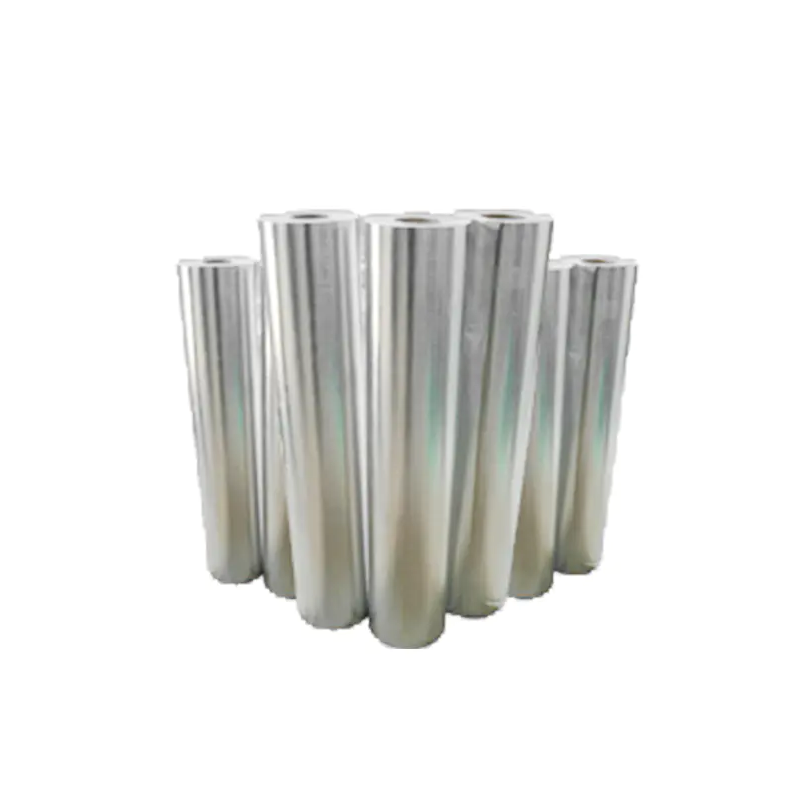In modern households, aluminum foil has become a common choice for wrapping leftovers or preparing picnic food due to its convenience in keeping food fresh and preventing odors from mixing.
The Convenience of Aluminum Foil in Food Storage
Aluminum foil (or tin foil) is widely popular because it is lightweight, easy to shape, and has excellent barrier properties. It effectively isolates air and moisture, helping to keep food fresh in the short term. For grilled or baked goods, aluminum foil can even help maintain the temperature and humidity of the food. Quickly wrapping food in aluminum foil before putting it in the refrigerator seems like a simple and efficient food storage method.
Potential Risks of Wrapping Food in Aluminum Foil in the Refrigerator
Despite the many advantages of aluminum foil, using it for long-term or improper food storage in the refrigerator may lead to the following problems:
1. Risk of Bacterial Growth (Food Safety Concern)
While aluminum foil provides a barrier, it does not usually create a completely sealed environment. When food, especially leftovers, is not tightly wrapped, bacteria from the air can still enter. More importantly, many people wrap food in aluminum foil and put it in the refrigerator before it has completely cooled down.
Tip: If hot food is tightly wrapped, the heat will be trapped inside, causing the food to remain in the "dangerous temperature zone" (4°C to 60°C) where bacteria multiply rapidly for too long. This greatly increases food safety risks, such as the growth of Salmonella or Staphylococcus aureus. Therefore, food should be cooled quickly at room temperature (no more than two hours) before being placed in the refrigerator.
2. Food Spoilage and Drying
Aluminum foil may become brittle or loose at low temperatures, resulting in tiny gaps in the wrapping. This not only fails to completely prevent bacteria but also exposes food to the dry air inside the refrigerator, causing "freezer burn" or accelerating food spoilage. In contrast, using better-sealing plastic wrap or airtight containers provides a more stable food storage environment.
3. Potential Aluminum Migration (Acidic Foods)
Aluminum foil itself is safe for most foods. However, when it comes into contact with highly acidic foods, such as tomatoes, vinegar, or certain fruits, trace amounts of aluminum may dissolve and leach into the food. While current scientific research indicates that this migration is far below the World Health Organization's safety limits, health-conscious and food-conscious consumers should avoid storing acidic foods in direct contact with aluminum foil.
Better Food Storage Alternatives
To maximize food safety and preservation, the following alternatives to aluminum foil are recommended for refrigerator storage:
1. Airtight Food Containers/Glass Containers
Suitable for: Leftovers, soups, prepared ingredients.
Advantages: Provides optimal sealing, effectively prevents odor mixing and drying, reusable, making it the best choice for food storage.
2. Self-Sealing Bags (Resealable Bags)
Suitable for: Small quantities of food, meat, liquids.
Advantages: Seals after removing excess air, reduces oxidation, and saves refrigerator space.
3. Food-Grade Plastic Wrap
Suitable for: Dish covers, short-term preservation.
Advantages: Economical, fits tightly to containers, and provides better sealing than aluminum foil.
Conclusion: Key to Safe Use of Aluminum Foil
Wrapping food in aluminum foil before refrigerating is not entirely unsafe, but it is not the most ideal way to store food. If you must use aluminum foil:
- Ensure food has cooled quickly: Avoid wrapping hot food.
- Short-term storage: Use only for short-term preservation within one or two days.
- Avoid acidic foods: Never allow aluminum foil to come into direct contact with acidic foods.
For families concerned about food safety, investing in high-quality food storage containers or airtight containers is the best solution to ensure long-term food safety and maintain quality in the refrigerator.

 English
English Español
Español




